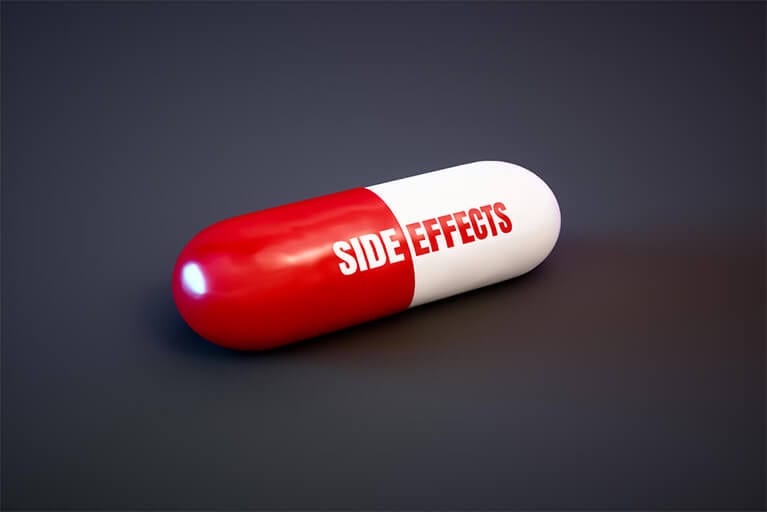Hypersensitivity Reactions to Medication
Understanding Stevens Johnson Syndrome
More than 100 drugs have been associated with severe, life-threatening hypersensitivity reactions, including Stevens-Johnson Syndrome (SJS) and Toxic Epidermal Necrolysis (TENS). Erythema Multiforme is a milder hypersensitivity reaction, less closely associated with use of particular drugs than SJS and TENS. Hypersensitivity reactions are immune-mediated reactions to drugs that range from relatively mild, (with only a rash or skin involvement), to deadly (with skin rashes that lead to massive loss of skin requiring painful treatments in a burn unit, ulcerations in mucous membranes, tissue death or necrosi, respiratory failure, kidney failure, and arrhythmia).

Speak To Experienced Drug Reaction Lawyers at Searcy Denney
The Florida Stevens-Johnson Syndrome lawyers at Searcy Denney note that allergic drug reactions are one of the leading causes of death in the United States. More than 100,000 patients are hospitalized each year due to adverse reactions to prescription and over-the-counter (OTC) drugs.
Lethal skin and systemic reactions are mostly commonly linked to non-steroidal anti-inflammatory (NSAID) drugs such as Motrin, Allopurinol, Phenytoin, Carbamazepine, barbiturates, anticonvulsants, and sulfa antibiotics. Pharmaceutical litigation attorneys explain that a drug reaction usually begins within days or weeks of ingestion. If identified early, the progression of Stevens-Johnson Syndrome or Erythema Multiforme may be stopped if the offending drug or drugs are identified and discontinued with appropriate supportive medical treatment.
Experienced Stevens Johnson Syndrome Representation
At Searcy Denney our Florida Stevens-Johnson Syndrome lawyers know that many patients with SJS develop early non-specific symptoms including headache, fever, fatigue, and sore throat. As SJS progresses, patients can develop painful ulcers in their oral, nasal, or pharyngeal passages or round lesions on their face, neck, legs, arms, and feet. Stevens-Johnson Syndrome and Toxic Epidermal Necrolysis are two of the most often misdiagnosed or undiagnosed conditions, and far too many patients die or suffer catastrophic injuries before their conditions are properly diagnosed and treated. Patients who have Stevens-Johnson Syndrome or Toxic Epidermal Necrolysis should seek immediate consultations with immunologists and dermatologists. Rural hospitals and medical providers may be ill-equipped to handle the significant medical needs of patients who are suffering from advanced stages of Stevens-Johnson Syndrome and Toxic Epidermal Necrolysis, so family members may want to seek transfer of their loved ones to a university hospital or, preferably, a regional burn unit.
Once a patient is diagnosed with SJS or TEN, it is important that he receive supportive care to restore his body’s functions. Supportive care includes provision and monitoring of IV and oral fluids, restoration of electrolytes, administration of special nutrients, adequate fluids and electrolytes, and skin treatment. Some scientists also advocate use of corticosteroids and intravenous immunoglobulin therapy.
Recent Hypersensitivity Reactions
The most recent example of a mass tort lawsuit involving Stevens-Johnson Syndrome and Toxic Epidermal Necrolysis is the arthritis drug, Bextra. Bextra, also known as valdecoxib, was the third drug approved in the class of pharmaceuticals known as Cox II inhibitors.
Bextra is manufactured and sold by Pfizer. The first two drugs approved in this class are Celebrex, also manufactured by Pfizer, which remains on the market, and Vioxx, which was recalled by Merck in September of 2004, following reports of patients suffering heart attacks, strokes, and other cardiac events. Bextra was withdrawn from the market by Pfizer in the United States in April of 2005 after reports linking the drug to numerous cardiovascular injuries and reports of patients suffering life-threatening skin reactions and deaths due to Stevens-Johnson Syndrome and Toxic Epidermal Necrolysis. These hypersensitivity reactions were noted in patients taking Bextra, only some of whom had a history of having an allergy to sulfa drugs.
Contact Searcy Denney
The Florida products liability lawyers at Searcy Denney have litigated claims involving patients who have suffered hypersensitivity reactions, including Stevens-Johnson Syndrome and Toxic Epidermal Necrolysis, against healthcare providers and pharmaceutical manufacturers, each of whom often share responsibility for the devastating injuries suffered by patients with drug induced hypersensitivity reactions.


